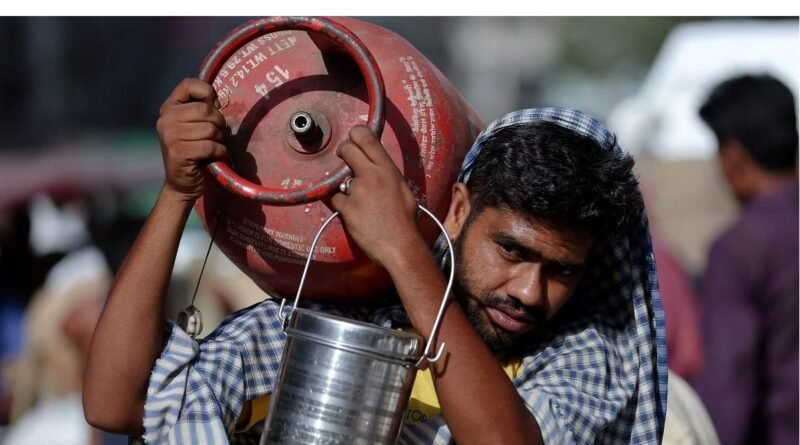2024 is near and parties can’t ignore Ladli Behnas and Gruha Lakshmis
Cut in gas prices is an unusual move for the Modi government, which has so far prided itself on effectively targeting its subsidies.
If the adage about the key to a man’s heart being his stomach is true, political parties are fast realising that the key to a woman’s vote is her wallet. Parties across the country are finally coming to terms with a basic fact of Indian politics—women represent a potent bloc, and wooing their votes is key to winning elections. The Modi government’s LPG subsidy announcement last week is just the latest in a string of women-centric announcements by both the Centre and state governments.
With Lok Sabha elections due next year, more such announcements are likely. And that is why the LPG subsidy and other women-centric schemes is ThePrint Newsmaker of the Week.
Women, the vote bank
For the women of Madhya Pradesh, Rakshabandhan came slightly early this year. Last Sunday, Madhya Pradesh Chief Minister Shivraj Singh Chouhan made a slew of announcements extending the benefits under his government’s Ladli Behna Yojana. Now, under the scheme, women in Madhya Pradesh will receive a monthly stipend of Rs 1,250, up from the previous Rs 1,000. Among the other announcements was the slashing of the price of LPG to Rs 450 per cylinder during the month of ‘sawan’ (4 July to 31 August), hiking the reservation limit for women in police departments from 30 per cent to 35 per cent, implementing a 50 per cent reservation in educational institutes for women, and ensuring preferential appointment of women in state departments.
Not to be outdone by state governments, the Modi government on Tuesday broke its own convention and extended its LPG subsidy to even non-Ujjwala yojana households — ostensibly, the Prime Minister’s own rakhi gift to the women of the country.
Under the scheme, all households buying LPG cylinders would receive a Rs 200 per cylinder subsidy. Those already getting a Rs 200 per cylinder subsidy under the PM Ujjwala scheme would see the subsidy amount increase to Rs 400 per cylinder.
This is an unusual move for the Modi government, which has so far prided itself on effectively targeting its subsidies to benefit only those who need it. By extending the subsidy to non-Ujjwala households, the government is effectively aiming at pleasing not just the women in poor households, but in all households.
Several Union ministers were quick to thank the Prime Minister, with Finance Minister Nirmala Sitharaman even calling it a ‘Sneha Upahar’ (gift of love).
The Opposition, of course, tried to make it about themselves. West Bengal chief minister Mamata Banerjee posted on X (formerly Twitter) that while the INDIA alliance had so far met just twice in the past two months—an odd thing to brag about, to be honest—this already had the effect of inducing the government to reduce LPG prices.
“Yeh hai INDIA ka dum (this is the strength of INDIA),” she added, in Hindi.
In all this hyperbole, nobody wants you to notice that this week of celebrating women saw no mention—by the Centre or the opposition—of Manipur and the violence against women happening there. Sneha upahars, ladli behenas, and opposition dum are reserved for poll-bound women, after all.
As the week continued, Rakhi looked just too good an opportunity to miss. The Congress government in Karnataka, serendipitously also celebrating its 100th day in power in the state, on Wednesday rolled out its Gruha Lakshmi scheme, a poll promise. Under the scheme, Rs 2,000 would be deposited in the accounts of every woman head of a family from below poverty line families, as well as in above poverty line and Antyodaya families with ration cards.
This was one of five pre-poll promises the Congress had made. Apart from Gruha Lakshmi, another promised scheme—Shakti—was aimed directly at women. Under Shakti, women would be entitled to free travel across Karnataka on state buses.
Past success
It wouldn’t be a stretch to say that another Karnataka Congress poll promise, of distributing 10 kg of rice to every member of below poverty line families every month, was also aimed at women.
It’s no real surprise that so many governments—and these announcements are just the most recent of many—are going out of their way to woo the votes of women. It’s worked before, as the BJP saw in the 2022 Uttar Pradesh elections. Post-poll surveys showed a large number of women voted for the Yogi Adityanath government because of the Modi government’s provision of free food for the poor, and cash transfers for women during the pandemic.
Forming about half of India’s population, across caste and religious lines, women are an extremely attractive voting bloc. Expect many more women-centric schemes in the months to come.
(Edited by Anurag Chaubey)
Source: The Print




